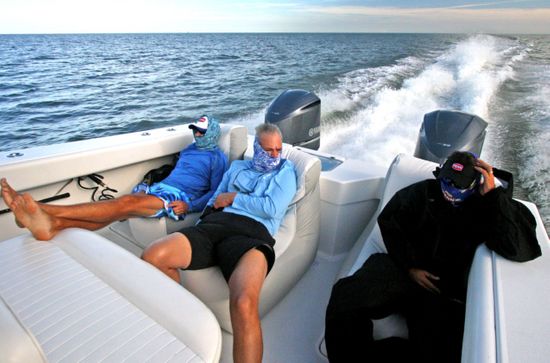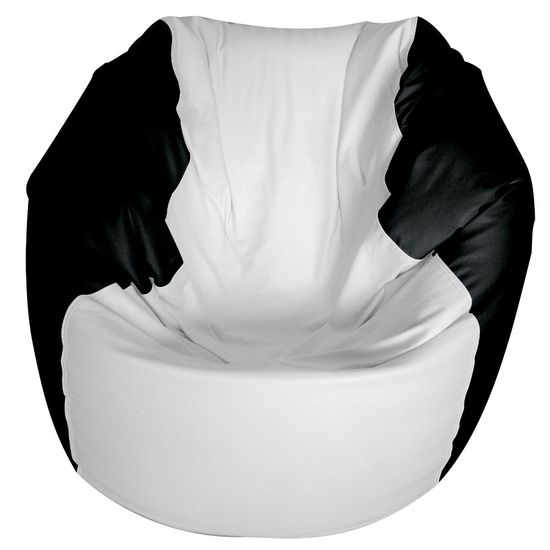Four Ways to Add Seats to a Boat

Any boater who has stepped off a boat with an aching back knows poor boat seating may be the reason. Boaters get bounced, banged, bumped and bruised, especially if on long cruises with substandard seats, and that can translate into long-term back pain. Anglers, in particular, may be subject to posterior problems since they tend to shoot off over choppy bays at highway speeds regardless of the conditions. Here are four kinds of seats boaters can add to boats to improve the ride for family, friends, or fishing buddies.
On many boats, particularly center consoles favored by fishermen, the only comfortable seats are the helm and a single passenger seat. Every other spot to rest a rump can be tough on the gluteus maximus. Bay and flats boats often incorporate a pair of jump seats or a stern bench seat, but these positions are rarely well padded and lack back support. Aluminum and duck boats are often worse, with bench seats that usually get padded by an extra life vest or a balled-up jacket.

Boatbuilding standards created by the ABYC and used by the NMMA Certified Boat Program only refer to permanently installed seats in cockpits, deck areas, and all helm positions, including their fastenings and structure to which they are attached. The standard covers adjustable seats, flip-up bolsters, leaning posts, seat locking mechanisms, and swivel seats. Type A seats are designated occupant positions while the boat is underway at any boat speed. Type B seats are designated occupant positions at boat speeds not exceeding five miles per hour.
For the standard, the seats must withstand a 400 lb. (182 kg) weight released from a 9” (22.9 cm) height. The test load is then applied to the seat for five minutes. The seatbacks are tested and must be able to withstand, without loss of function, a force of 150 lbf (668 N) for five minutes without deforming in excess of 30 degrees, and without permanent deformation after the test of more than 10 degrees. The seatbacks are tested and must be able to withstand, without loss of function, a force of 253 lbf (1,126 N) for five minutes without deforming in excess of 50 degrees, and any material failure that creates a potential hazard or personal injury is a failure. And this is just a sample, as the armrests, bolsters, and footrests of seats must also go through similar testing.
Boaters who are out to fish, cruise, waterski, or whatever, may not place seating high on the list of priorities. A comfy seat should rank right up there with a reliable powerplant and a hull that doesn’t leak. The Bottom line (pun intended)? Bang around on a boat with poor seating for a few years, and it will take a long-term toll on the body. Some boaters exist in a state of perpetual back and neck pain, thanks to a pinched nerve and compressed spine, courtesy of decades of “seas be dammed, we’re going fishing anyway” attitude. The industry is full of guys who walk with a lurch, have hunchbacks, and sport ugly scars from back surgery. Many now own boats with cushy seats and leaning posts.
Rather than continuing the abuse, stop coming home from a day of fishing feeling battered and bruised. Now is the time to improve the seating. Here are some options.
1. Cooler Seating

Many boaters already haul an ice chest on board and can add a snap-on cooler cushion for the portable fishbox. The downside: Cooler seating doesn’t provide any kind of backrest. While it can be leaned against the transom or a gunwale, a boater will have to add a coaming pad, or else a fiberglass edge will be digging into the passengers’ vertebrae. Plus, these coolers can slide on the deck, forcing the occupants to brace their feet if they want to stay in one place. Mounting screw-down chocks at the corners will stop the slide, but add tripping points and pierce the deck with screw holes—ouch. A better bet is to get a rubber non-slip mat to go underneath the cooler. Unfortunately, there’s one more problem: the screw-on snaps that come with the cushions don’t hold well in the relatively soft plastic of the cooler, so plan on replacing one or two after a single season of use. If a big guy sits on the cushion in rough seas, the screws probably won’t survive the single voyage. Plug the holes and re-seat the screws with 3M 5200 adhesive/sealant, and you can get another month or so out of them.
2. Hard-Mounted Utility Seat

This add-on jump seat can be mounted only in a corner of the stern (right where jump seats are usually found) and will fold flat against the gunwale when not in use. While it folds out of the way for fishing time, it still takes up some space and will get in the way at times. The best designs come with mounts that bolt slide-in receivers to the gunwale because they can be removed entirely (except for the hardware) when not in use. These seats can be rock-solid add-ons, useful in virtually any sea condition, but they require holes to be drilled for mounting, not always pleasant. They are a good choice for fishing boats that don’t have tons of stowage, yet cruise long distances, then need to clear the cockpit. These seats have limited use when it comes to saving the spinal column because they don’t offer much back support.
3. Cushioned Folding Deck Chair

Folding deck chairs designed for boats have better stability than the canvas models, and these won’t get tippy unless you’re in the roughest of seas. The aluminum version is surprisingly light, while the stainless-steel models are rugged. Both are very bulky and boaters who plan to clear the deck for fishing will need a large stowage area to get them out of the way. Even after folding them up, they’re almost a foot wide and a few feet tall and across. They are completely portable, however, and can be taken from boat to boat without a hassle. The aluminum model goes for well over a hundred dollars and the stainless-steel version costs more, so at the top end, you could be spending $400 for a pair.
4. The Bean Bag

Bean bag chairs are super-comfy, even on a 50-mile offshore run through harsh seas. They sit low on the deck, so they’re 100-percent stable with no tipping danger whatsoever. In rough seas, many boaters consider them more comfortable than an adjustable helm seat or leaning post. They go for a mere $50 or so, at big-box retailers, where they’re sold as “video game” seats. They’re bulky and don’t fold or deflate so they can present stowage problems. A pair will literally fill up the cabin on a 21’ (6.4 m) walkaround. The marine-grade bean bags cost a bit more ($100 or more) but they tend to not get soaked if they get hit with spray or rain, but smart boaters will dry them thoroughly before stowing them to reduce the chance of mildew.